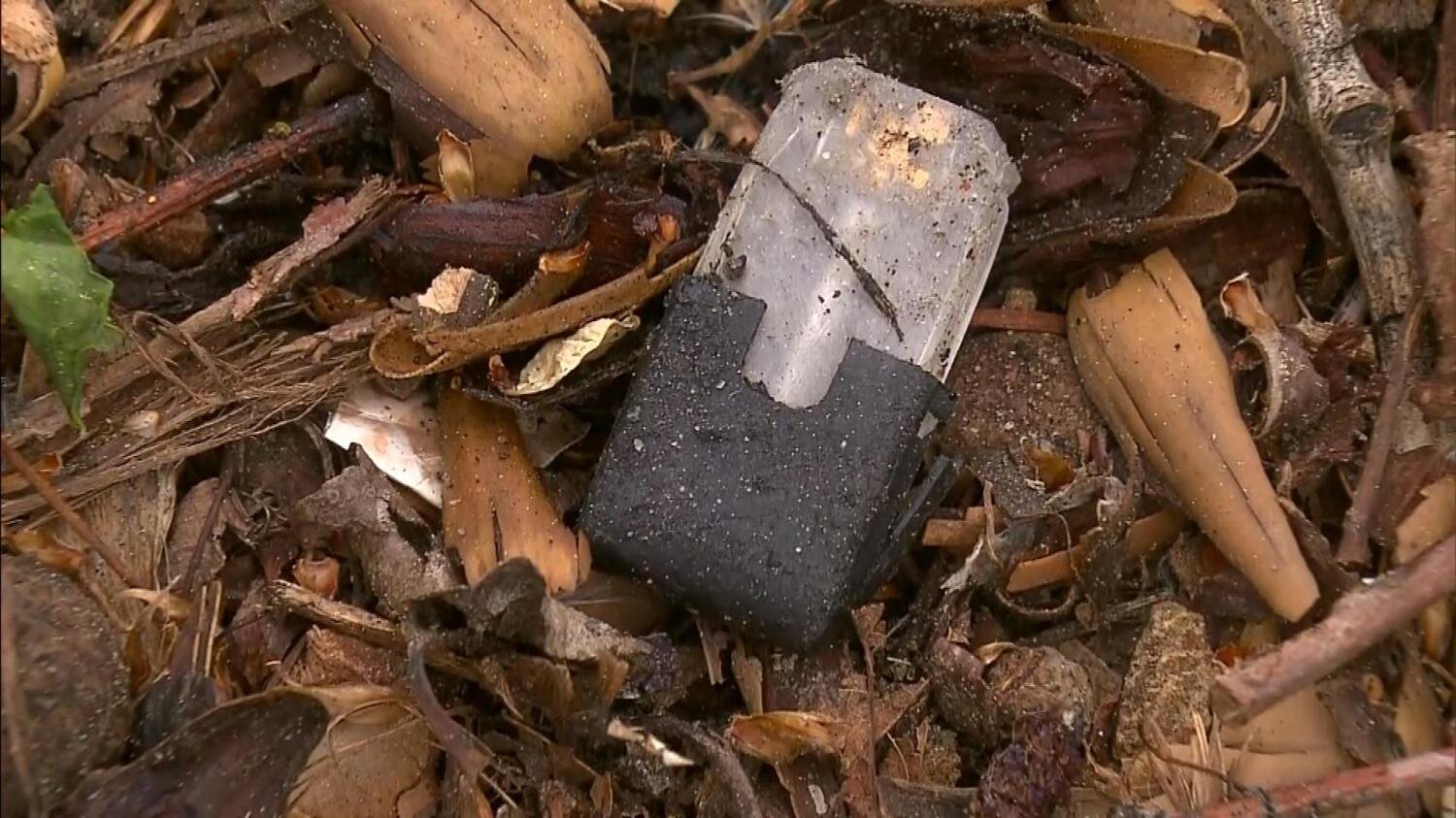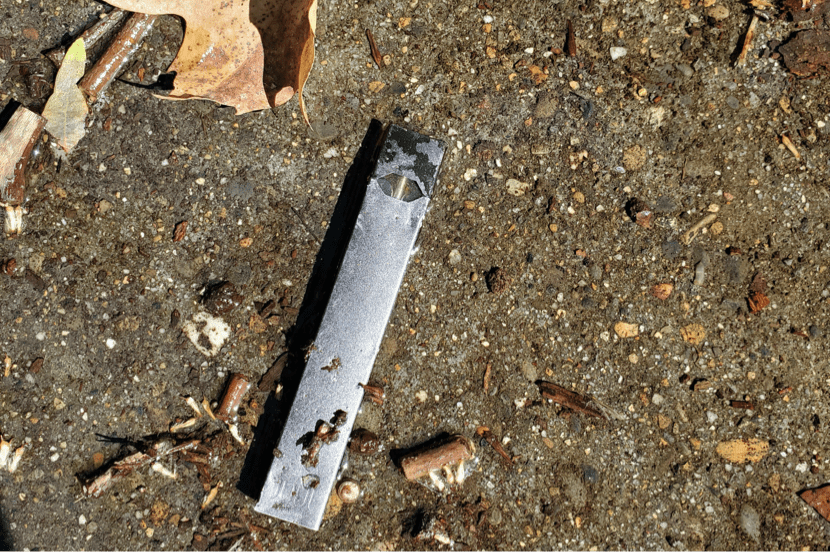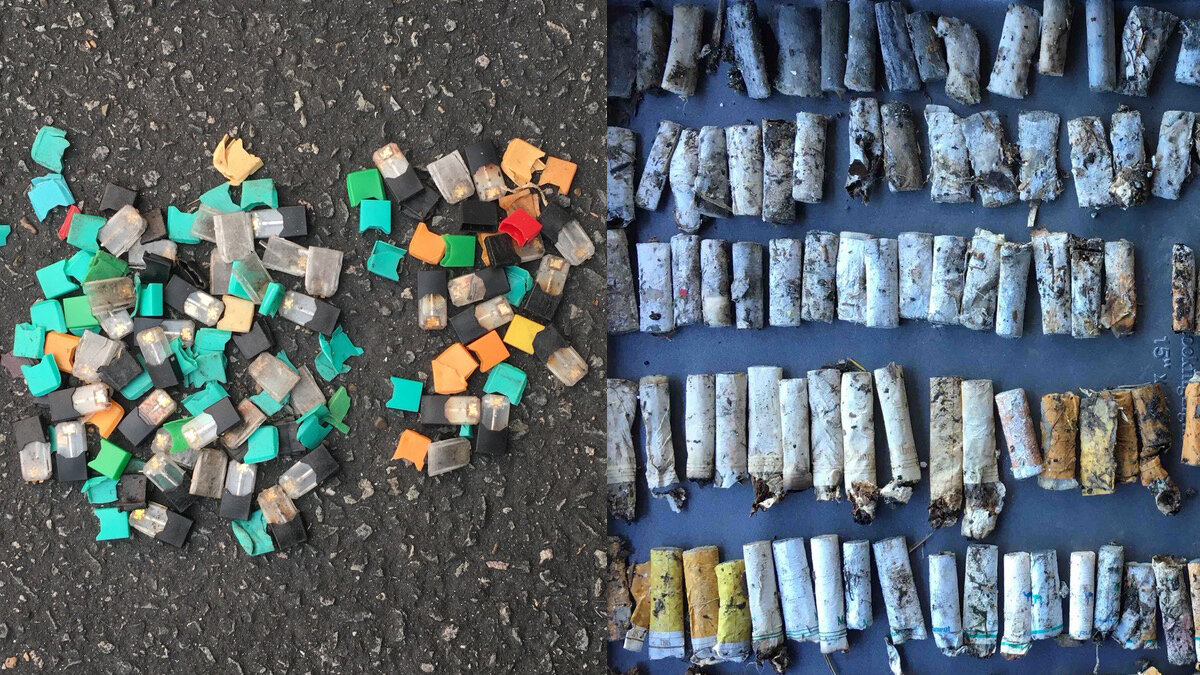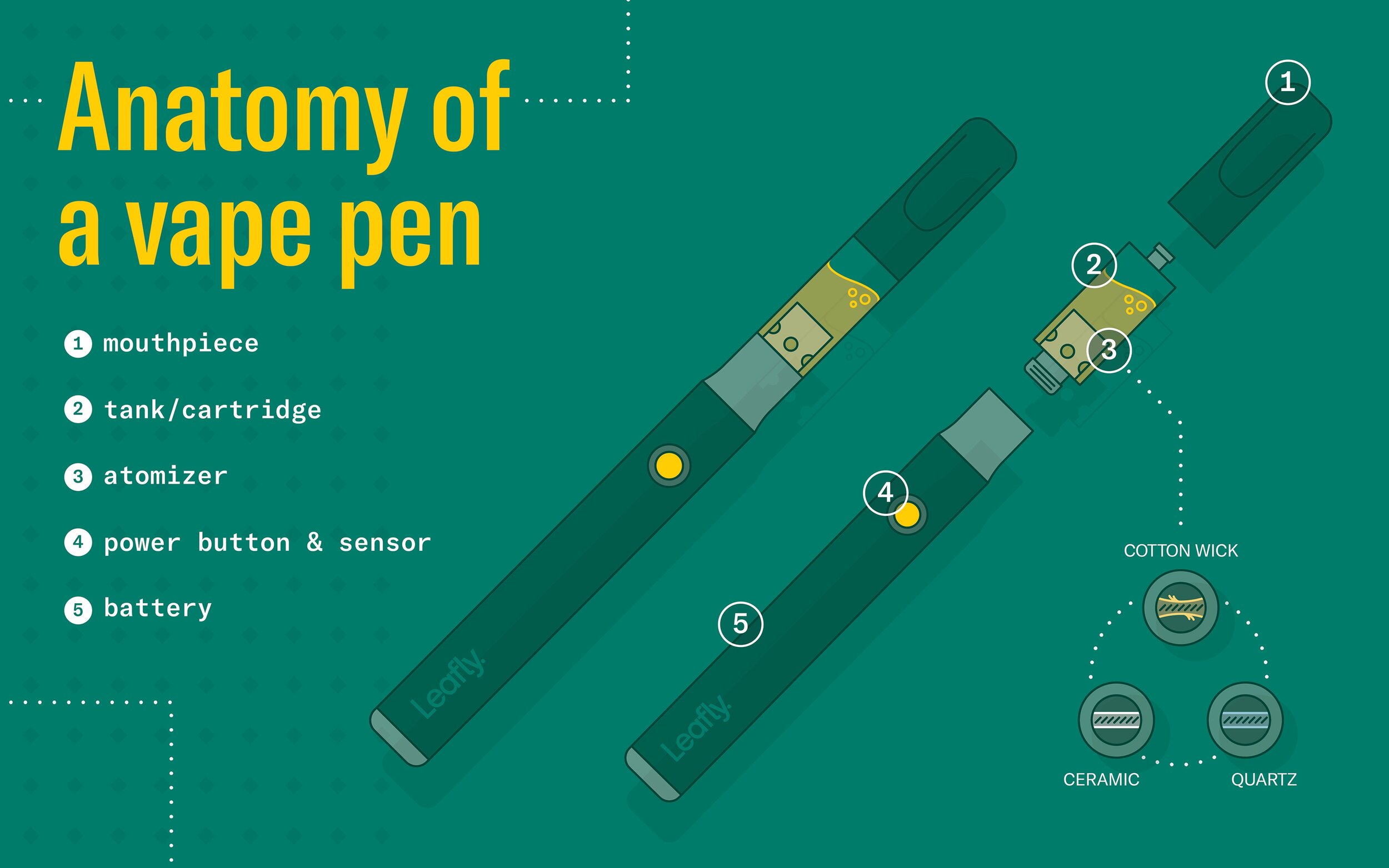VAPE: Single-Use Plastic, Hazardous, Non-Recyclable E-Waste
A few notes on why VAPING is bad for you, your earth, your babies, your friends, your desire to be GORGEOUS, your self esteem, and let’s just say health and planet again for emphasis.
Cigarettes have notoriously been the #1 beach trash found in beach cleans. Well, habits are changing, and so too is the waste that goes with them. Each Juul, a popular e-cigarette, has a single-use plastic pod containing about 200 puffs of e-liquid and are not intended to be reused, according to the firm's website - they cannot be recycled either because the e-liquid contains the toxin nicotine.
The e-cigarette maker's sales have skyrocketed in recent years, going from 2.2 million devices sold in 2016 to 16.2 million in 2017. This growth was in part due to increased sales of small, disposable e-cigarettes that resemble a USB flash drive. Juul forecasted its 2019 revenue to be $3.4 billion! That’s a lot of addictive single-use plastics.
ENVIRONMENTAL THREAT
Vape waste is bad for the environment, because it is three forms of waste in one:
Plastic Waste
Hazardous Waste
Electronic Waste (e-waste)
SINGLE USE PLASTICS
The device body & pod components are made of hard plastics. Plastic is an environmental problem because it doesn’t biodegrade like organic materials do – it can take up to hundreds of years for some plastic items to decompose.
Many vape products, like Juul, use plastic pods or cartridges to hold the e-juices. Users replace the plastic pods when the e-juice is used up; these are not reusable, thus they are single-use plastic pods. Unfortunately, these pods cannot be recycled with other plastic waste because they contain the toxic e-liquid residue including nicotine, which is hazardous waste! Rechargeable e-cigarettes like Juul have lithium-ion batteries, which can be recycled via most city recycling programs, like Call2Recycle. As of now, there’s no clear way to recycle used pods in the U.S.
ENDOCRINE DISRUPTING
If you’ve been following my work for a while, you should know by now that mixing plastic and heat lead to devastating health disasters.
A basic google shows that whilst the atomiser is made of various materials, the body, the mouthpiece, and the e-liquid/e-juice/tobacco container is made of plastic. The control circuit limited the peak operating temperature to approximately 215C (419F). It is recommended online that 390 F to 420 F is considered the best temperature range to vape e-juice at.
Thus, when you heat up the container to vaporise the liquid, you are not just breathing in chemicals to get you high, you are breathing in the fumes from the heating of the plastic pod, the plastic mouthpiece, the plastic pen body, etc. as that e-liquid is vaporised into a gas and travels through the pen into your body and lungs. Read further for a touch on the subsequent lung diseases, but for this section I’d like to remind us that ingesting anything hot that has been stored in plastic or that gets heated up in the plastic or if the plastic is hot—this acts like estrogen in our bodies, effectively disrupting our endocrine system and negatively disturbing our reproductive organs—including infertility! A flood of estrogen or an estrogen-mimicking chemical in our body will lead to growth disorders, including cancers, heart disease, obesity and weight gain, and even behavioural, emotional, and mental maladies.
On my personal plastic-free journey, it was this horrifying information and science that pushed me to go further than just showing my plastic-free lifestyle and begin sharing the negative impacts of ubiquitous plastic on not just our earth but also our health. And our offspring’s health! It’s a lot. So just trust me and avoid heating plastics and eating, drinking, breathing those fumes!
HAZARDOUS WASTE
Both California state and federal laws list nicotine as hazardous waste. Nicotine, including nicotine salt, is listed by the US Environmental Protection Agency (EPA) as an acute hazardous waste. The Food & Drug Administration (FDA) banned flavors other than tobacco and menthol for pod or cartridge-based e-cigarettes. Unfortunately after intense tobacco industry lobbying efforts, the FDA’s policy doesn’t include disposable e-cigarettes, which are also plastic. Not surprisingly, the popularity of these products, such as Puff Bar, has taken off meaning plastic waste peaking but also unregulated toxic chemicals being ingested by the masses!
Nicotine is a neurotoxin that has been used as a pesticide and has been considered acute hazardous waste by the Environmental Protection Agency (EPA) since 1980! Discarded devices may leach lead, cobalt, and other substances into the environment in toxic amounts. Toxic chemicals from commercial tobacco product waste can accumulate in animals, soil, and aquatic ecosystems, leading to contaminated drinking water and foods and posing additional downstream risks to human health and the environment.
If pods & cartridges are discarded as litter, they may leach nicotine & other toxic chemicals into the environment or be eaten by wildlife or pets. Research has shown that even very small amounts of nicotine can be harmful or even lethal to animals.
As batteries degrade, they can leach their chemicals into the environment. And if they are put in garbage or trash receptacles, they pose a fire risk in waste and recycling facilities if damaged or exposed to high heat, putting workers’ safety at risk.
E-cigarettes and their cartridges may qualify as both e-waste and biohazard waste. Neither policy nor product information currently gives consumers guidelines for disposing of e-cigarettes. E-cigarette and e-liquid waste should not be thrown in the regular trash or flushed down a sink. Instead, these items should be taken safely to a hazardous waste facility. Do you really want to put that into your body?
E-WASTE
Vapes are e-waste since they contain lithium-ion batteries & a heating element. Disposing of e-waste is a considerable challenge due to the many different types of chemicals and materials in these products. Vapes present at least two problems, as their vaporizers contain a circuit board, which can contain plastics and heavy metals. They also use lithium-ion batteries. But many vape products and accessories are being thrown away in the garbage or worse – dumped as litter, as the UCSF survey found.
Yogi Hale Hendlin, an environmental philosopher at University of California, said that e-cigarettes are similar to smartphones in that they have complex computer circuitry, hard plastics, heavy metals and lithium ion batteries. Since the pen has similar technology to a smartphone it needs to be disposed at an electronic waste facility. On the company website it is stated that Juul pen must be disposed at an e-waste facility, but based on surveys and pollutation data, users cannot be bothered.
Judith Enck, a regional director of the Environmental Protection Agency told Earther 'Most communities do not have easy to access electronic waste return programs. I'm extremely concerned about the millions of tiny lithium ion batteries that are littered or sent to incinerators or landfills.'
In Australia, e-waste is also the fastest-growing component of the municipal solid waste stream. Every year, 44.7 million tonnes of e-waste is generated around the world – containing up to US$ 65 billion worth of raw materials like gold, silver and platinum sent to landfill. The amount of global e-waste is expected to increase by almost 17% to 52.2 million tonnes in 2021, or around 8% every year.
ADDICTIVE
Nicotine is the primary agent in both regular cigarettes & vapes or e-cigarettes, & it is HIGHLY addictive. It causes you to crave a smoke & suffer withdrawal symptoms if you ignore the craving. Many e-cigarette users get even more nicotine than they would from a tobacco product — you can buy extra-strength cartridges, which have a higher concentration of nicotine, or you can increase the e-cigarette’s voltage to get a greater hit of the substance.
NOT TESTED
E-cigarettes are a relatively new tobacco product that have been sold in the U.S. for about a decade The e-cigarettes currently in the U.S. marketplace have not been systemically reviewed by the Food and Drug Administration to determine their impact on lung health. While much remains to be determined about the lasting health consequences of these products, the American Lung Association is very troubled by the evolving evidence about the impact of e-cigarettes on the lungs.
IRREVERSIBLE DAMAGE
In January 2018, the National Academies of Science, Engineering and Medicine released a consensus study report that reviewed over 800 different studies making clear that the inhalation of harmful chemicals through e-cigarettes can cause irreversible lung damage and lung disease. The study concluded that e-cigarettes both contain and emit a number of potentially toxic substances. The Academies' report also states there is moderate evidence that youth who use e-cigarettes are at increased risk for cough and wheezing and an increase in asthma exacerbations.
TOXIC
Nicotine is also TOCXIC. It raises your blood pressure & spikes your adrenaline, which increases your heart rate & makes more likely to have a heart attack. Regular tobacco cigarettes contain 7,000 chemicals, many of which are toxic. E-cigarettes heat nicotine (extracted from tobacco), synthetic flavorings + other chemicals to create an aerosol that you inhale.
A study from the University of North Carolina found that the two primary ingredients found in e-cigarettes—propylene glycol and vegetable glycerin—are toxic to cells and that the more ingredients in an e-liquid, the greater the toxicity.
E-cigarettes produce a number of dangerous chemicals including acetaldehyde, acrolein, and formaldehyde. These aldehydes can cause lung disease, as well as cardiovascular (heart) disease.
E-cigarettes also contain acrolein, a herbicide primarily used to kill weeds. It can cause acute lung injury and COPD and may cause asthma and lung cancer.
Both the U.S. Surgeon General and the National Academies of Science, Engineering and Medicine have warned about the risks of inhaling secondhand e-cigarette emissions, which are created when an e-cigarette user exhales the chemical cocktail created by e-cigarettes.
The Centers for Disease Control is currently investigating 530 reported cases of severe lung illness related to vaping. Out of the 530 cases, the CDC has analyzed 373 and determined that that two-thirds of people with severe lung illnesses, or 67 percent are 18 to 34 years old, and 16 percent are under 18. The majority, 72 percent, are male. The CDC said symptoms include cough, shortness of breath, fatigue, chest pain, nausea, vomiting and diarrhea. These worsen over time.
SECOND HAND VAPE EMISSIONS ARE TOXIC
In 2016, the Surgeon General concluded that secondhand emissions contain, "nicotine; ultrafine particles; flavorings such as diacetyl, a chemical linked to serious lung disease; volatile organic compounds such as benzene, which is found in car exhaust; and heavy metals, such as nickel, tin, and lead." Your friends and family did not consent to breathing in the toxic waste from your nasty habit!
F-ED UP TO MARKET TO YOUTH
Vape cartridges are often formulated with flavorings such as apple pie and watermelon that appeal to younger users. In 2015, the U.S. surgeon general reported that e-cigarette use among high school students had increased by 900%, and 40% of young e-cigarette users had never smoked regular tobacco.
DONT HELP YOU QUIT
Although they’ve been marketed as an aid to help you quit smoking, e-cigarettes have not received Food and Drug Administration approval as smoking cessation devices. A recent study found that most people who intended to use e-cigarettes to kick the nicotine habit ended up continuing to smoke both traditional and e-cigarettes.
TOO MANY TOO FAST
This study found that 3.6 million adults vape daily. Even if just one-third of this group uses one pod or disposable e-cigarette a day, that would produce more than a billion pieces of vape waste in one year, with no place to properly discard or recycle. And this isn’t counting vape waste from the estimated more than five million middle and high school students who vape.
That’s it. Do your part. Educate your friends. Support them off their addiciton to this single-use plastic, hazardous, e-waste environmental and health disaster.
SOURCES
https://www.lung.org/quit-smoking/e-cigarettes-vaping/impact-of-e-cigarettes-on-lung
https://tobaccofreeca.com/environment/vape-waste-more-harmful-than-you-think/
https://www.ncbi.nlm.nih.gov/pmc/articles/PMC6187764/
https://pubmed.ncbi.nlm.nih.gov/30167658/
https://www.cdc.gov/mmwr/volumes/69/wr/mm6937e2.htm
https://www.cleanaway.com.au/sustainable-future/e-waste-problem/#:~:text=Every%20year%2C%2044.7%20million%20tonnes,or%20around%208%25%20every%20year.
Additional Information to Help Schools and Others
As sales of e-cigarettes have increased significantly in the past few years, institutions face a burden to dispose of e-cigarette waste in a way that protects human health and the environment. Schools face challenges both with confiscated e-cigarettes and with waste littered by students on school property. The most important step is to contact state and local environmental agencies to learn of specific guidelines. Please also review these additional resources:
Disposing of E-Cigarette Waste: FAQ for Schools and Others:
https://www.publichealthlawcenter.org/sites/default/files/resources/Disposing-of-E-Cigarette-Waste-FAQ-for-Schools-and-Others.pdfExternal Link DisclaimerMinnesota Pollution Control Agency: Vaping Liquids, E-cigarettes and Nicotine Wastes:
https://www.pca.state.mn.us/sites/default/files/w-hw4-65.pdfExternal Link DisclaimerColorado Department of Public Health & Environment: Vaping Liquids, E-cigarettes and Nicotine Wastes: Guidance for businesses, government agencies and schools handling nicotine-containing wastes:
https://environmentalrecords.colorado.gov/HPRMWebDrawerHM/RecordView/434101





